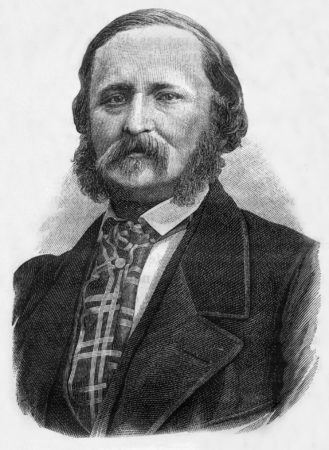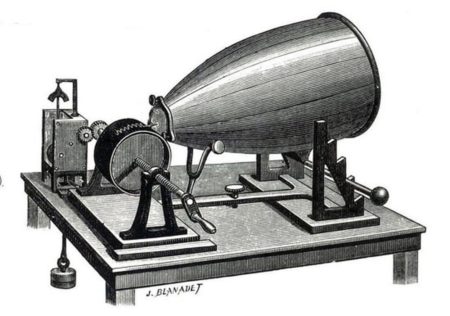The Grammy people postponed their ceremony until March due to Covid. Despite the delay they’ve already announced a number of awards. These include 29 songs and albums inducted into the Grammy Hall of Fame (shout-outs to Dr. John and Irma Thomas).
There’s much to like on this list, but one recording in particular stands out: “Au Clair de la Lune,” a “single” by Édouard-Léon Scott De Martinville.
Unlike the others, this tune never made it to jukeboxes, radio, TV or music stores. And that may be because it’s over 160 years old.
Also it’s only 21 seconds long.
So why is it in the Grammy Hall of Fame?
The web site First Sounds claims “Au Clair de la Lune” is the earliest clearly recognizable record of the human voice they’ve found. But it was never intended to be heard at all. In fact it took a team of scientists to bring it to our ears.

Édouard-Léon Scott de Martinville (1817 – 1879) was a typesetter by trade. In 1853 he was working at a scientific publishing house in Paris. While proofreading some anatomy engravings he came across one that showed the inner workings of the ear.
The idea of somehow turning speech into type had always fascinated Scott. For a time he tried to discover some form of stenography that could record a whole conversation without errors. Scott became something of an expert on shorthand and wrote several papers on the subject. But shorthand was not instantaneous and mistakes could still creep in.
As he studied the anatomy drawings he wondered, Could spoken words be captured by a device modeled on the ear the same way a camera was based on the eye? Inspired, Scott began to design such a device.
“I cover a plate of glass with an exceedingly thin stratum of lampblack. Above I fix an acoustic trumpet with a membrane the diameter of a five franc coin at its small end—the physiological tympanum (eardrum). At its center I affix a stylus—a boar’s bristle a centimeter or more in length, fine but suitably rigid. I carefully adjust the trumpet so the stylus barely grazes the lampblack. Then, as the glass plate slides horizontally in a well formed groove at a speed of one meter per second, one speaks in the vicinity of the trumpet’s opening, causing the membranes to vibrate and the stylus to trace figures.”

By the Light of the Moon
On April 9, 1860, Scott recorded a French folk song on his new invention — “Au Clair de la Lune.” That recording predates Thomas Edison’s “Mary had a little lamb” by 17 years.
Scott called his invention the phonautograph, and those squiggles on smoked glass (later on paper) a phonautogram. His machine created only visual images of the sound and wasn’t able to play back its recordings.
But that didn’t matter to Scott. His intention was for people to read the phonautograms the way you’d read text. A kind of machine-generated shorthand. As it turned out this wasn’t feasible, although he did sell several phonautographs to speech research labs. The sooty, squiggle-covered paper strips went to the French Institute, where they lay undisturbed for 150 years.
The rediscovery of Scott’s phonautographs in 2007 and the process involved in getting them to produce sound is a fascinating and well-documented story.
Since this video was made, researchers discovered that the recording was being played back too fast. So, instead of a woman, it’s thought Édouard-Léon Scott De Martinville himself is singing.
Scott never really profited from his invention. Within a few years Edison’s own sound recording and playback device overshadowed the Frenchman’s achievement. Scott ended his days as a librarian and bookseller at 9 Rue Vivienne in Paris.
But now he has a Grammy Hall of Fame award, and the satisfaction of an answer to a visionary question:
“Can one hope,” Scott wrote, “that the day is near when the musical phrase escaping from the lips of the singer will come to write itself . . . on an obedient page and leave an imperishable trace of those fugitive melodies that the memory no longer recalls by the time it searches for them?”





